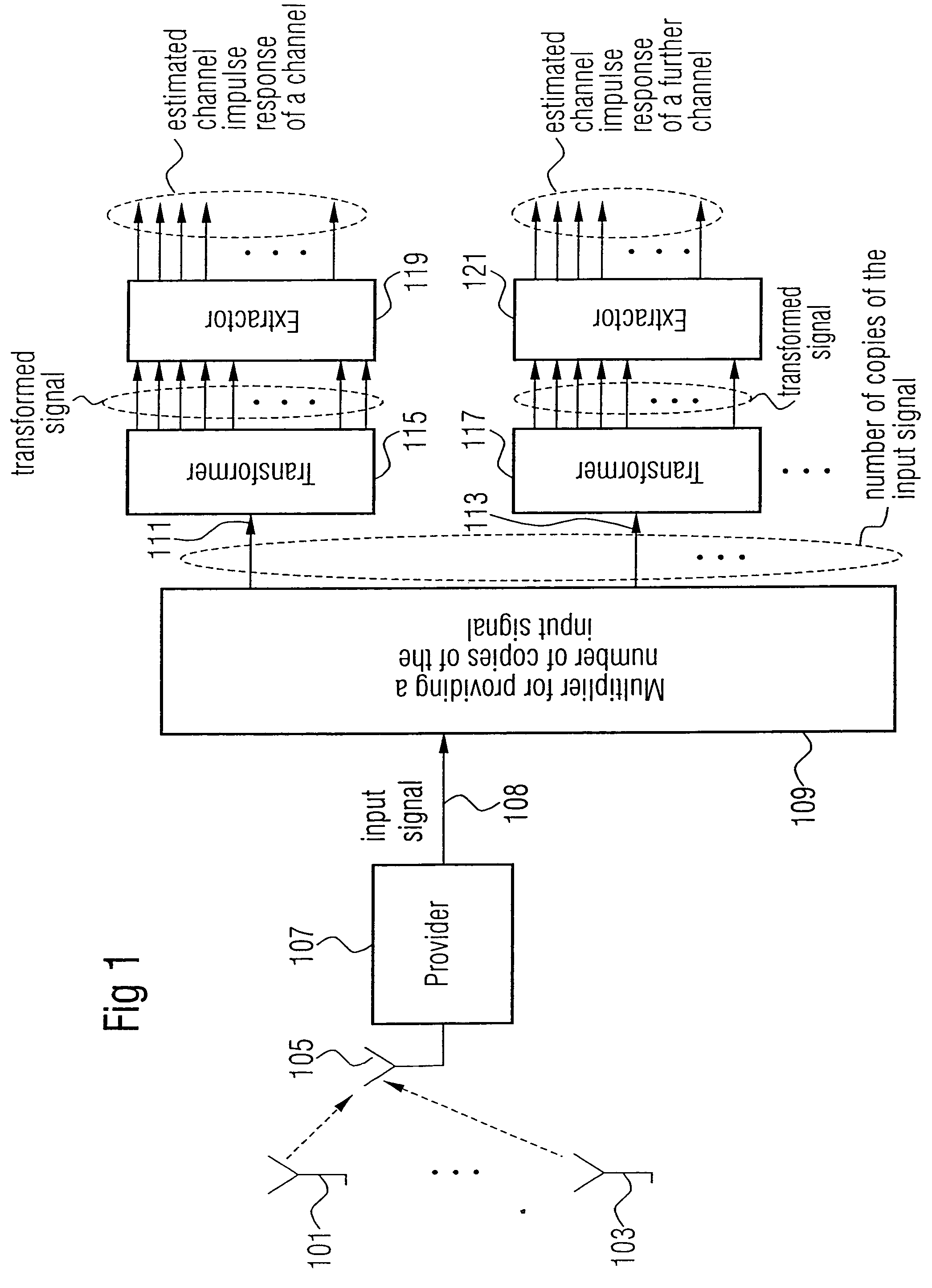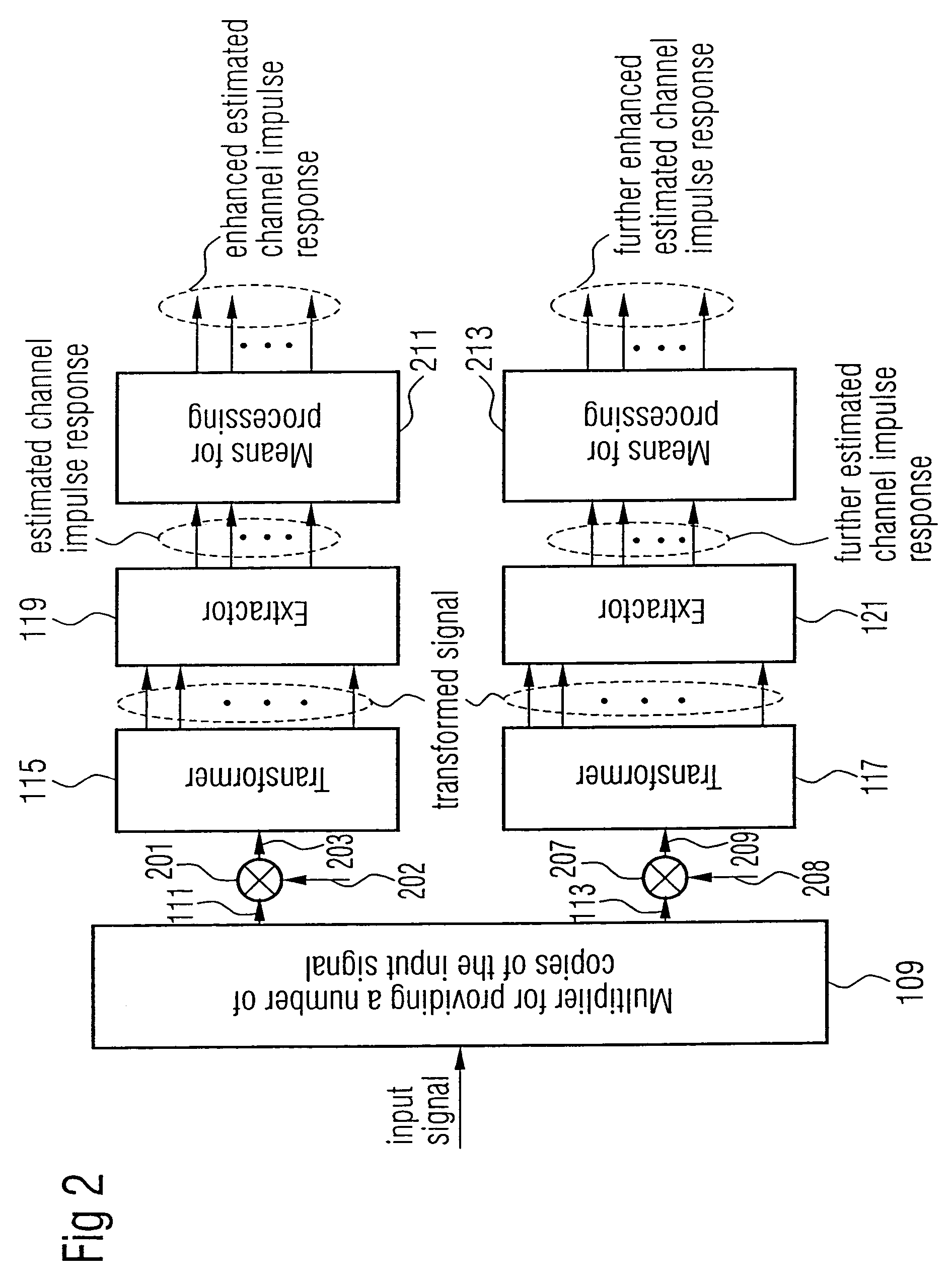Apparatus and method for estimating a channel
a channel estimation and channel technology, applied in the field of telecommunications, can solve the problems of huge computational complexity at the receiver, new challenges for channel estimation, and may not be suitable for mass-market mobile receivers, and achieve the effect of reducing complexity
- Summary
- Abstract
- Description
- Claims
- Application Information
AI Technical Summary
Benefits of technology
Problems solved by technology
Method used
Image
Examples
Embodiment Construction
[0067]In FIG. 1 a block diagram of an inventive apparatus for estimating a channel is shown, wherein the apparatus is embedded in a multiple output scenario characterized by a plurality of transmit antennas. For the sake of clarity FIG. 1 shows only two transmit antennas, 101 and 103.
[0068]The apparatus shown in FIG. 1 comprises a receive antenna 105 having an output connected to a provider 107. The provider 107 has an output connected to a multiplier 109 for providing a number of copies of the input signal. The multiplier 109 has a number of outputs, the number corresponding to a number of copies to be provided or, in other words, corresponding to a number of transmitting points. For the sake of simplicity, only an output 111 and a further output 113 of the multiplier 109 are depicted in FIG. 1.
[0069]The output 111 is connected to a transformer 115, and the further output 113 is connected to a transformer 117. Each of the transformers 115 and 117 has a number of outputs correspondi...
PUM
 Login to View More
Login to View More Abstract
Description
Claims
Application Information
 Login to View More
Login to View More - R&D
- Intellectual Property
- Life Sciences
- Materials
- Tech Scout
- Unparalleled Data Quality
- Higher Quality Content
- 60% Fewer Hallucinations
Browse by: Latest US Patents, China's latest patents, Technical Efficacy Thesaurus, Application Domain, Technology Topic, Popular Technical Reports.
© 2025 PatSnap. All rights reserved.Legal|Privacy policy|Modern Slavery Act Transparency Statement|Sitemap|About US| Contact US: help@patsnap.com



